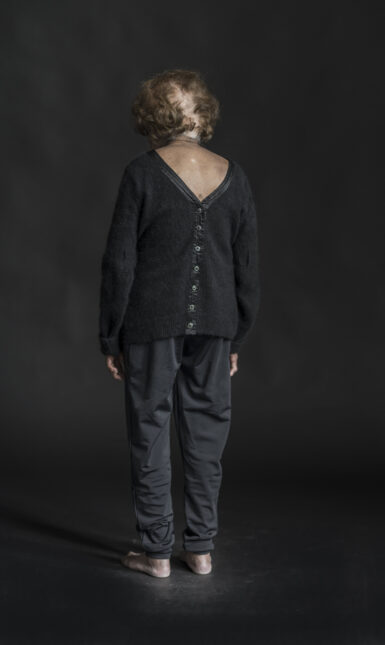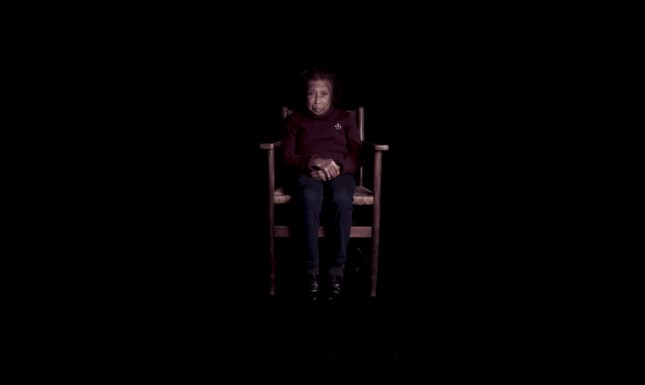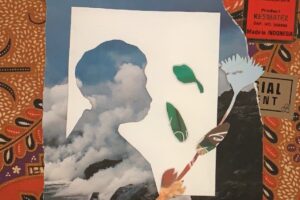The Umbilical Cord
According to photography theorist Roland Barthes, the umbilical cord is understood in photography as the connection between the viewers and the subject or past moment of the photograph.
In photography, the connection between the viewer and the photographed is a topic of discussion. The photographer's ability to realistically capture a moment can provide a clear reality for the viewer to look at and perhaps even share an experience with. There is a relationship that exists between the past moment captured in the photograph and the viewer. Photography theorist Roland Barthes called this connection an umbilical cord in his 1980 book Camera Lucida. Like an umbilical cord’s ability to share bodily fluids between mother and child, the umbilical cord between viewer and referent shares the experience of the photographed with the viewer. Contrastingly, the Dutch artist Peggy Van Mosselaar understands the analogy of the umbilical cord differently from Barthes as seen in her series Tali Pusat which translates to ‘umbilical cord’ in Bahasa Indonesian. Instead of focussing on connecting the viewer to the past moment in her photographs, she wishes to cut the umbilical cord to say goodbye to the subject.

Van Mosselaar started her series Tali Pusat (2019) by photographing her mother, Fientje Ida Wenzel, who was struggling with dementia, to prepare for the mourning process that was to come with her mother’s passing. Van Mosselaar did not simply include her mother as the subject in the series but also included her mother in the artistic process, making it a collaborative project. Together they travelled to East Java, Indonesia, where her mother grew up before immigrating to the Netherlands. And together Van Mosselaar and her mother created photographic portraits (fig. 1), videos (fig. 2) and collages (fig. 3) to fill in her mother’s memory gaps as well as represent her state of mind and capture their shared identity.
The journey made by Van Mosselaar and her mother represents their shared experiences as mother and child both literally and figuratively. Literally because they went on a journey to Indonesia together and figuratively because of their similar identity. In the photograph below (fig. 1), we see Wenzel standing against a black screen, facing away from the camera. She is wearing a black cardigan that is buttoned the wrong way around which represents the confusion that came with her dementia. Van Mosselaar is connected to this photograph as a photographer, a viewer and as the daughter of Wenzel. All three of these connections are because of a metaphorical umbilical cord. In these three roles, Van Mosselaar remembers the past moment and shares the experience of that moment with her mother in the photograph. This past moment refers to Wenzel’s confusion and struggles with dementia but also the literal moment of the photograph: Wenzel posing for her daughter.

The umbilical cord is also cut between Van Mosselaar and her mother because the photograph represents Wenzel when she was still alive. When looking at the photograph now, Van Mosselaar sees a lost moment: a moment that cannot ever exist again and a shared experience in the past that will stay forever in the past. Their connection as mother and child is no more because of her mother’s passing. This photograph is a reminder that the umbilical cord between mother and child has been permanently cut.
Tali Pusat shows us that while there is a connection between the viewer and the subject in the photograph that can be described as an umbilical cord, this umbilical cord can also be cut because of the circumstances of the photograph. In Peggy Van Mosselaar’s series, there is a permanent umbilical cord between her and her mother because of her relationship to the artworks as a photographer, a viewer and as the child of the subject. Contrastingly, the umbilical cord has also been irreversibly severed due to her mother’s death. The real connection they had will never exist again. The photographic series is a reminder of the death of the past moments and the passing of her mother.

Julia Krantz is a third-year Arts, Media and Society student at Leiden University and is interested in contemporary art and gender studies. Currently, she is doing an internship at FOTODOK which explores the connection between society and photography. In preparation for this article, Julia interviewed the artist Peggy Van Mosselaar who is working with FOTODOK and will exhibit her series Tali Pusat in the exhibition called Part of Me… Shaping MentalSpaces in August 2022. For updates regarding the exhibition, follow FOTODOK’s Instagram page.


0 Comments